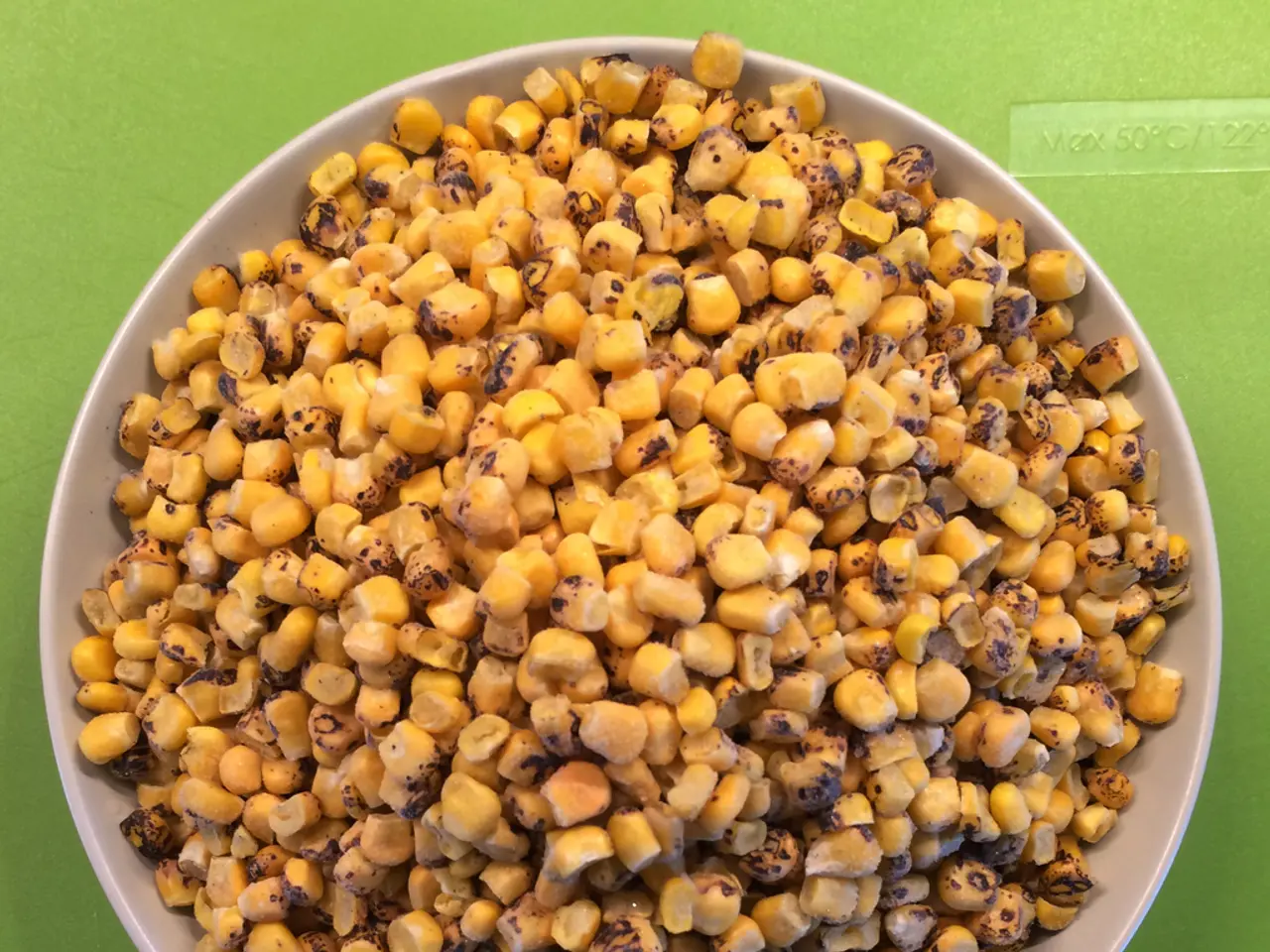Cultivating Cover Crops in Personal Vegetable Plots
In the realm of home vegetable gardening, cover crops have emerged as a valuable tool for maintaining and improving soil health. These crops, which can be direct-seeded in the garden, are planted to enhance soil fertility, water quality, and aid in managing weeds, pests, and diseases.
The selection of cover crop species depends on various factors. These include the time of seeding, the duration of growth, the garden's growing conditions, and the gardener's specific priorities or goals. For most home gardeners, a cover crop that winter-kills is often the best option, as it poses the lowest risk of becoming weeds in the future and requires minimal inputs to manage.
After sowing, the cover crop bed should be prepared to provide good seed-to-soil contact. Gently irrigate the upper inch of soil until the seeds germinate, and then water less frequently but deeper until seedlings reach 1-2 inches tall. Proper planning is crucial to ensure gardeners get the greatest benefit from cover crops. This includes understanding the timing and duration of the cover crop, the termination method, and the purpose and goals of the cover crop.
If pests, disease, or fertility issues arise, planting a cover crop for the entire growing season can be beneficial. This should be done in early to mid-spring (April to May) and terminated 2-3 weeks before planting vegetables the following spring. Termination should occur about a week after flowering starts to prevent unwanted seed germination in subsequent growing seasons. Cover crops that are not properly killed at the appropriate time can become significant and difficult weeds.
In summer, fast-growing cover crops should be planted after the spring harvest (late June to early July) and terminated 2-3 weeks before fall planting, usually by mid-August. In the fall, cover crops can be planted from late August through early October, depending on the cover crop.
Cover crops have several benefits in the home vegetable garden. They improve soil structure, fertility, and compaction, suppress weeds and pests, support wildlife, and integrate well into crop rotations. They can also be planted between vegetable crop plantings when the garden would otherwise be fallow, or as living mulch growing at the same time as the vegetable crop.
For optimal benefits, consider planting a cover crop mixture that combines grasses, legumes, brassicas, and broadleaves. A common and effective approach is to plant a multi-species mixture including grasses (e.g., ryegrass, cereal rye), legumes (e.g., crimson clover, hairy vetch, cowpeas), brassicas (e.g., daikon radish, mustard), and broadleaves (e.g., buckwheat). Planting mixes with 2 to 6 species tailored to your specific garden goals optimizes benefits like nitrogen fixation, organic matter addition, soil aeration, and pest management.
In conclusion, a thoughtfully selected cover crop mixture combining grasses, legumes, brassicas, and broadleaves provides multiple soil health benefits and supports productive vegetable production in home gardens. Understanding your goals for cover crops helps you choose the best species for your needs, and proper planning ensures you reap the maximum benefits.
- Incorporating a cover crop mixture, consisting of grasses, legumes, brassicas, and broadleaves, into one's home vegetable garden can significantly improve soil health, aid in weed and pest management, and enhance productivity.
- For home gardeners seeking to maintain a balanced lifestyle, integrating technology and data-and-cloud-computing tools can help in planning and optimizing the selection of cover crops, ensuring the greatest benefit for their individual goals and growing conditions.
- Choosing a cover crop that winter-kills is usually the best option for most gardeners, as it minimizes the risk of becoming weeds and reduces the need for maintenance.
- To prevent cover crops from becoming difficult-to-manage weeds, it's essential to terminate them at the appropriate time, typically about a week after the flowers start to bloom.
- To maximize benefits like nitrogen fixation, organic matter addition, soil aeration, and pest management, consider planting cover crop mixtures with 2 to 6 species, carefully tailored to your individual garden priorities and growing conditions.
- Summer gardening can benefit from fast-growing cover crops, which should be planted after the spring harvest and terminated 2-3 weeks before fall planting, allowing for optimal soil health improvements and weed suppression.




